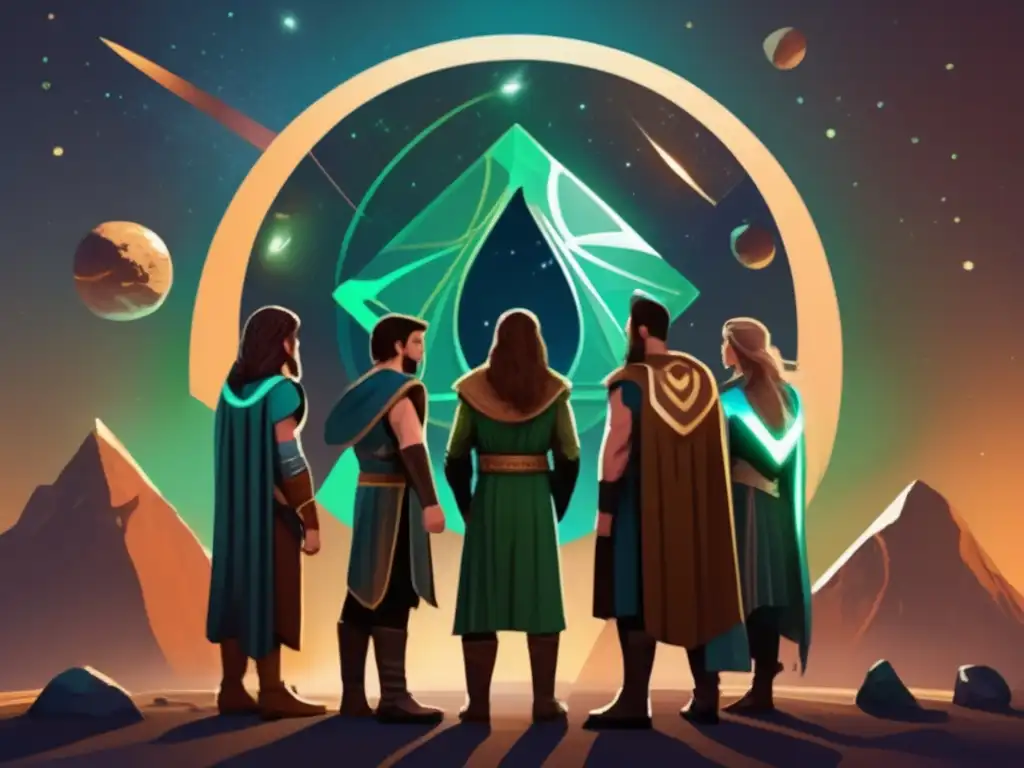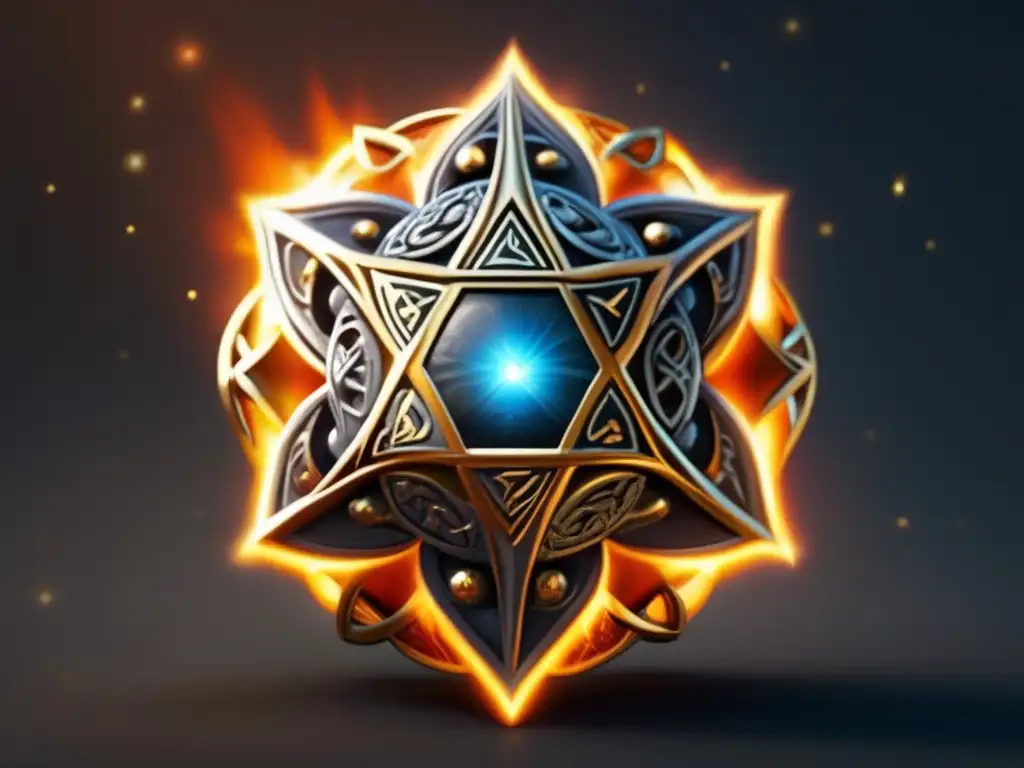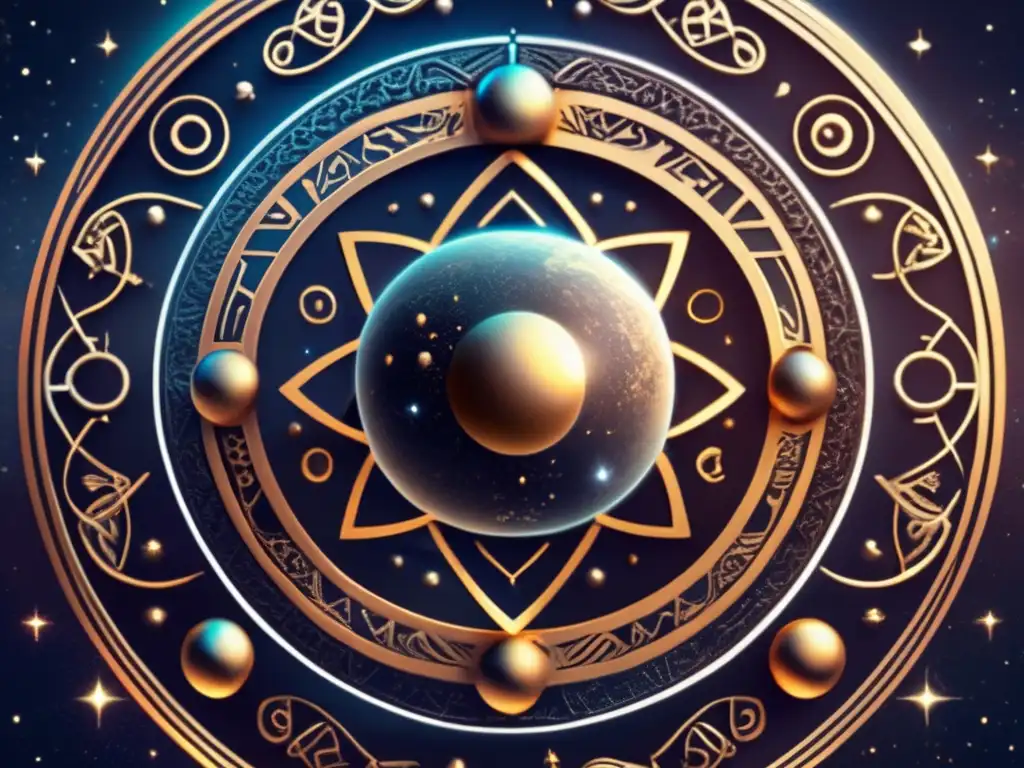The Symbolism Of Asteroids In Celtic Lore

Introduction
The link between celestial objects and human cultures is a universal phenomenon that dates back to ancient times. The Celts, one of the major societies that flourished in Europe from the Iron Age to the Middle Ages, had their own beliefs and practices related to astronomy, including the symbolism of asteroids.
Asteroids and Celtic Cosmology

The Role of the Sun and the Moon
In Celtic cosmology, the Sun and the Moon were crucial celestial bodies that represented the duality of life. The Sun was associated with masculine energy, power, and strength, whereas the Moon symbolized feminine energy, intuition, and emotional attunement. Both were revered as important sources of life and were often depicted in Celtic art and mythology.
Asteroids as Deities and Protectors
Asteroids, or "falling stars," were also considered as significant celestial entities in Celtic culture. They were often seen as supernatural beings with special powers and abilities. In some Irish legends, for example, asteroids were believed to be the homes of fairies and other magical creatures who could grant wishes or bring misfortune to humans.
Similarly, some asteroids were considered as protectors of certain regions or clans. The asteroid Bennu, for instance, was said to be the guardian of the kingdom of Connacht in western Ireland. It was believed to have guided the people of Connacht during battles and storms, and to have bestowed blessings upon them.
Asteroids and Celtic Mythology

The Story of Táin Bó Cúailnge
One of the most famous legends in Celtic mythology is the Táin Bó Cúailnge, which tells the story of the great cattle raid of Cooley. According to the myth, the goddess Macha, who was pregnant with twins, was forced to race against horses in order to save her husband's honor. She won the race but died giving birth to her children. As a result, she became associated with the constellation Cassiopeia and several asteroids, including (878) Mildreda and (188) Menippe.
The Battle of Mag Tuired
Another important Celtic myth that involves asteroids is the Battle of Mag Tuired, which features the god Lugh as the hero who defeats the evil Fomorians. Lugh was said to possess many talents, including being a skilled warrior, a wise leader, and a master of all crafts. He was also associated with the constellation Lyra and several asteroids, such as (26075) Luguhu and (21851) Lugaid.
Asteroids in Celtic Art

Stone Circles and Megaliths
Celtic art, especially the megaliths and stone circles that are scattered throughout Europe, often depict celestial bodies, including asteroids. For example, the Callanish Stones in Scotland feature several standing stones that form a circle, with one stone in the center and several others arranged in a cruciform pattern. Some researchers believe that this configuration may have been designed to align with the positions of certain asteroids or stars during solstices or equinoxes.
Knotwork and Spiral Designs
Another common motif in Celtic art is knotwork and spiral designs, which are believed to represent the interconnectedness of all things in the universe. Some experts suggest that these patterns may have been inspired by the movements of asteroids or other celestial objects, as they appear to follow similar trajectories and orbits.
Frequently Asked Questions

-
Did the Celts have a special name for asteroids?
No, there is no evidence that the Celts had a specific name for asteroids. They were often referred to as "falling stars" or "shooting stars," and were seen as important but ephemeral phenomena.
-
Were there any rituals or ceremonies related to asteroids in Celtic culture?
There is little information about specific rituals or ceremonies that were related to asteroids in Celtic culture. However, it is likely that these celestial bodies were included in various religious and spiritual practices, such as divination, healing, and offerings.
-
Are there any contemporary practices or beliefs related to the symbolism of asteroids in Celtic lore?
Some modern practitioners of Celtic spirituality continue to incorporate the symbolism of asteroids into their rituals and ceremonies. Others may use asteroids as a source of inspiration for art, poetry, or other forms of creative expression.
-
What is the significance of the constellation Cassiopeia in Celtic mythology?
Cassiopeia was associated with the goddess Macha, who played an important role in several legends, including the Táin Bó Cúailnge. The constellation was seen as a powerful symbol of feminine energy, beauty, and strength.
-
What do knotwork and spiral designs represent in Celtic art?
Knotwork and spiral designs are often interpreted as symbols of interconnectedness and continuity, reflecting the belief that all things in the universe are connected and that life is cyclical rather than linear.
Conclusion
The symbolism of asteroids in Celtic lore highlights the deep connection between human cultures and the cosmos. For the Celts, these celestial bodies were not just scientific phenomena but also sources of inspiration, guidance, and mystery. By exploring the myths, art, and beliefs related to asteroids, we can gain a better understanding of our place in the universe and our relationship with the natural world.
We hope this article has been informative and engaging. We encourage you to share your thoughts and comments below, and to visit Asteroid Realm for more fascinating articles and resources on asteroids and astronomy.
Additional Resources

- The Role of Astronomy in Iron Age and Medieval Ireland
- Astronomical Symbolism in Celtic Art: A Reappraisal
- The Legend of Macha in Celtic Mythology
 The Sky's Message: Asteroids In Native Hawaiian Mythology
The Sky's Message: Asteroids In Native Hawaiian Mythology Exploring Asteroids In Maori Mythology
Exploring Asteroids In Maori Mythology Prophecies Of The Sky: Asteroids In Jewish Folklore
Prophecies Of The Sky: Asteroids In Jewish FolkloreIf you want to discover more articles similar to The Symbolism Of Asteroids In Celtic Lore, you can visit the Asteroid Mythology category.
Leave a Reply

Articulos relacionados: